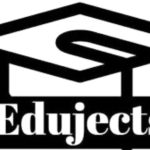The second term for JSS 1 Music introduces essential concepts in music theory and practice, ranging from musical notation to the history of music. This comprehensive guide will cover each topic in detail, providing clear explanations, examples, reading assignments, and evaluation questions to help students understand and master the subjects. The guide is structured to make it easy for both beginners and those with little knowledge of music to grasp the material.
1. Revision
Revision serves as the foundation for the second term, helping students recall key concepts learned in the previous term. It’s crucial for reinforcing knowledge and preparing for new material.
Key Points:
- Review of Basic Music Theory: Revise key concepts like musical notes, rhythms, and time signatures that were introduced in the first term.
- Music Notation: Familiarize yourself with how music is written on the staff.
- Key Terminology: Revisit terms such as treble clef, bass clef, and beats.
Reading Assignment:
- Go through your previous music notes and textbooks, focusing on the concepts you found challenging.
Evaluation Questions:
- What is the difference between a treble and bass clef?
- Can you identify the musical notes on a staff?
- Explain the concept of rhythm and how it relates to beats.
- What is the purpose of a time signature in music?
2. Musical Notes and Their Values
In this section, students will learn about musical notes and their respective values, which form the backbone of music notation. Understanding these values is crucial for reading and performing music correctly.
Key Points:
- Note Values: Learn about the different note types such as whole note, half note, quarter note, eighth note, and their corresponding time durations.
- Whole note = 4 beats
- Half note = 2 beats
- Quarter note = 1 beat
- Eighth note = ½ beat
- Reading and Writing Notes: How to write and recognize these notes on a music staff.
Example:
- A whole note is drawn as an open circle with no stem.
- A half note has a stem and a filled circle.
- A quarter note has a stem and a filled circle with a black notehead.
Reading Assignment:
- Practice drawing each type of note and associating them with their corresponding beats.
Evaluation Questions:
- How many beats does a quarter note receive?
- What is the difference between a half note and a whole note?
- Draw a whole note, half note, and quarter note.
- How many beats does an eighth note get?
3. Musical Rest and Their Values
In music, rests are used to indicate periods of silence. Each rest corresponds to a specific note value and is just as important as notes in music.
Key Points:
- Types of Rests: Learn the different types of rests, including:
- Whole rest = 4 beats of silence
- Half rest = 2 beats of silence
- Quarter rest = 1 beat of silence
- Eighth rest = ½ beat of silence
- Rest Notation: Each rest has a unique symbol that represents a silence in the music.
Example:
- A whole rest looks like an upside-down hat and represents 4 beats of silence.
- A quarter rest looks like a squiggly line and represents 1 beat of silence.
Reading Assignment:
- Practice identifying and writing the different rests in your notebook.
Evaluation Questions:
- What is the symbol for a quarter rest?
- How long does a half rest last?
- How is a whole rest represented in music notation?
- Write a simple rhythm using quarter rests and eighth rests.
4. Time Signature
The time signature is a crucial concept in music that determines how many beats are in each measure and which note value gets the beat.
Key Points:
- Understanding Time Signatures: Learn the two common time signatures:
- 4/4 time (four beats per measure, quarter note gets the beat) is also called common time.
- 3/4 time (three beats per measure, quarter note gets the beat) is often used for waltz music.
- Reading Time Signatures: Recognize and interpret time signatures in music.
Example:
- A 4/4 time signature means there are 4 beats in each measure, and a quarter note gets 1 beat.
- A 3/4 time signature means there are 3 beats in each measure, and a quarter note gets 1 beat.
Reading Assignment:
- Practice reading simple pieces of music in 4/4 and 3/4 time signatures.
Evaluation Questions:
- What does the top number in a time signature represent?
- How many beats are in a measure in 4/4 time?
- What is the difference between 4/4 and 3/4 time signatures?
- Write a short piece of music in 4/4 time.
5. Folk Songs
Folk songs are traditional songs that are passed down through generations, often telling stories of a culture or community.
Key Points:
- Characteristics of Folk Songs: Learn about the simple melodies and lyrics, often telling stories or expressing feelings of the common people.
- Cultural Significance: Folk songs are an important part of a country’s cultural heritage.
- Examples of Popular Folk Songs: Examples include Kumbaya and Twinkle Twinkle Little Star.
Example:
- Kumbaya is a popular folk song that has been sung in many cultures, expressing unity and peace.
Reading Assignment:
- Learn the lyrics and melody of a simple folk song like Twinkle Twinkle Little Star in French or English.
Evaluation Questions:
- What is a folk song?
- Name one well-known folk song and explain its meaning.
- What makes folk songs different from other types of music?
- Why are folk songs important in cultural history?
6. Classification of African Musical Instruments
Africa has a rich musical heritage, and its instruments can be classified into four main categories: idiophones, membranophones, chordophones, and aerophones.
Key Points:
- Idiophones: Instruments that produce sound by vibrating their own material (e.g., xylophone, shekere).
- Membranophones: Instruments that produce sound by vibrating a membrane (e.g., drums, talking drum).
- Chordophones: Stringed instruments like the kora and balafon.
- Aerophones: Wind instruments such as the flute and trumpet.
Example:
- Talking drum is a well-known membranophone used in Nigerian traditional music.
Reading Assignment:
- Research the different types of African musical instruments and list them with their classifications.
Evaluation Questions:
- What are idiophones in African music?
- Name two examples of membranophones.
- What category does the kora belong to?
- Explain the role of African instruments in traditional ceremonies.
7. Traditional Musical Instrumentals / Making of Local Musical Instruments
This topic introduces students to the process of creating traditional instruments and their use in local music performances.
Key Points:
- Creating Instruments: Learn how materials like wood, skins, and metal are used to craft musical instruments.
- Local Instruments: Understand the cultural significance of locally made instruments such as the djembe and ngoni.
Example:
- A djembe drum is made from a hollowed-out piece of wood and covered with animal skin.
Reading Assignment:
- Research how one traditional African instrument is made and write a report about it.
Evaluation Questions:
- How is a djembe drum made?
- What materials are used in crafting traditional African instruments?
- Why is the making of local instruments important in African culture?
- Name one traditional instrument and describe its purpose.
8. Playing the Recorder
Learning to play an instrument such as the recorder is an essential part of music education. The recorder is a simple wind instrument that helps students understand melody and rhythm.
Key Points:
- Learning Notes on the Recorder: Start by learning the basic notes like C, D, and E.
- Finger Placement: Understand how to place your fingers correctly to produce different notes.
Example:
- To play C, cover the first three holes on the recorder with your fingers.
Reading Assignment:
- Practice playing simple tunes on the recorder, focusing on finger placement and rhythm.
Evaluation Questions:
- What note is produced by covering the first three holes on the recorder?
- Why is the recorder a good instrument for beginners?
- How do you play the note D on the recorder?
- What are the challenges in playing the recorder?
9. History of Music
Understanding the history of music provides students with a broader context for the songs and instruments they learn to play.
Key Points:
- Early Music: Learn about music in ancient cultures and how it evolved.
- Classical to Modern Music: Understand the transition from classical music to modern genres.
Example:
- Beethoven was a composer from the classical period whose music is still performed today.
Reading Assignment:
- Research the history of a particular music genre and summarize its evolution.
Evaluation Questions:
- Who was Beethoven?
- What is the difference between classical and modern music?
- Name one early music form and explain its significance.
- How has music evolved over the centuries?
10. Revision
This section is designed to revise everything learned so far in the second term. It consolidates the knowledge and prepares students for the exam.
Key Points:
- Review musical notes, rests, time signatures, instruments, and playing techniques.
- Focus on areas where you have the most difficulty.
Reading Assignment:
- Go over all the notes and practice exercises from this term.
Evaluation Questions:
- What are the key differences between musical notes and rests?
- How do time signatures affect a musical composition?
- Review your notes on African musical instruments.
11. Exam
This section will test the knowledge and skills acquired during the term. It’s a comprehensive test to evaluate how well you’ve understood the material.

